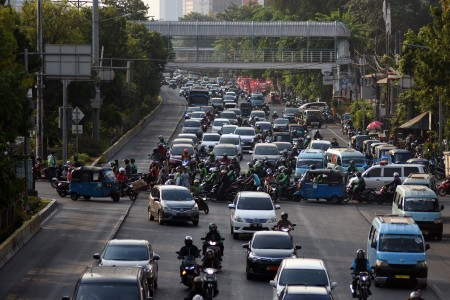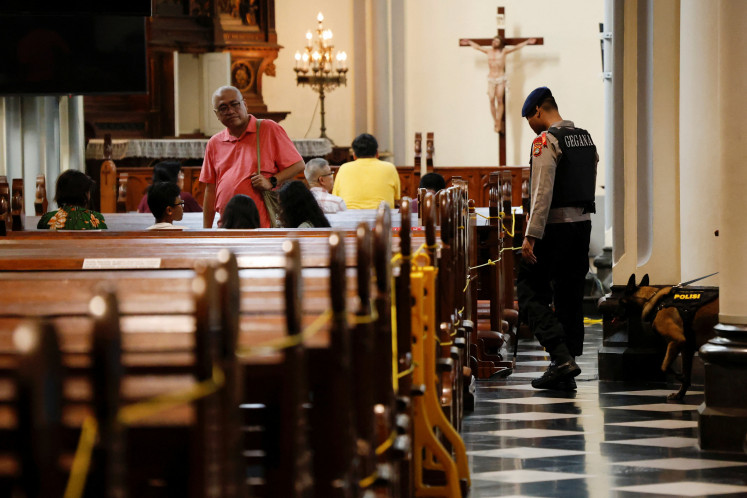Popular Reads
Top Results
Can't find what you're looking for?
View all search resultsPopular Reads
Top Results
Can't find what you're looking for?
View all search resultsLow hanging fruit for Jakarta’s air pollution
The root cause for the air pollution issue does not only stem from the sources, such as vehicle and fossil-fired power plant emissions near the city, but also on how such discharges are regulated.
Change text size
Gift Premium Articles
to Anyone
T
he capital has just experienced a combined wake-up call from air quality levels and, more recently, the blackout. The air quality index in Central and South Jakarta, two main central business districts, has consistently hit the “unhealthy for sensitive groups” (60 percent) and even one level worse at “unhealthy” (38 percent) levels for the past three months, making Jakarta the chart-topper of world’s worst air quality rankings from May to July.
The worsening air quality has also become more apparent visually with a gray and brownish blanket of smog covering the city skyline.
The root cause for the air pollution issue does not only stem from the sources, such as vehicle and fossil-fired power plant emissions near the city, but also on how such discharges are regulated. The emission standards from coal-fired power plants (CFPP) in Indonesia far lags behind its developing nation peers such as China and India.
The sulphur dioxide ( SO2 ) and nitrogen oxide (NOx) standards under Environment and Forestry Ministerial Regulation No. 21/2008 for new thermal power plants in Indonesia are 7.5 times higher than those in India and 15 to 20 times higher than in China. Simply put, it would take 15 to 20 days for a CFPP in China to emit as much NOx and SO2 than what a same-sized CFPP would release in a single day in Indonesia.
The 2008 regulation also aggregates the standard for particulate matters (PM) emissions to 100 milligrams per cubic meter ( Nm3 ), still three times higher than in India and 10 times higher than in China, and does not specify the limit for PM2.5, one of the most hazardous air pollutants produced from, among other things, combustion of solid and liquid fuels in vehicle engines and power generation.
No wonder the Jakarta Air Quality Index reading was improved to “moderate” in the wake of the massive blackout affecting West Java, Banten and Jakarta on Aug. 4.
The power outage was partly induced by the failure of Suralaya and Cilegon CFPPs as reported by state electricity company PLN. Despite the causal relation of the thermal power plant shut down with reduced air pollutant levels in Jakarta in the following morning requiring further analysis, clearly less fuel being combusted means less air pollutants are emitted.

















